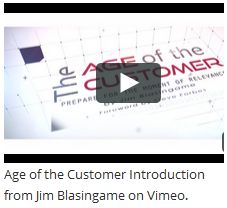Cogito ergo sum. French philosopher Rene Descartes proposed this idea in 1637, which translates to “I think, therefore I am.” Certainly the power of abstract thought is what separates humans from other animals.
Anthropologists now believe Homo sapiens succeeded, unlike other members of the genus Homo, Neanderthals and Cro-Magnon for example, because our brains had a greater capacity for speech and language. Today Descartes might have modified his philosophy to “I think and speak, therefore I am.”
In “Wealth of Nations,” Adam Smith proposed the written word as one of the three great human inventions. But long before humans were writing we were telling stories. And these stories – told, memorized and retold over millennia – became the headwaters of human development. We humans love to tell stories almost as much as we love to listen to them.
Another thing that’s older than writing is the marketplace. Long before Madison Avenue ad copy, merchants were verbalizing the value and benefits of their wares. Surely early business storytelling was the origin of modern selling skills.
In 1965, Intel’s co-founder Gordon Moore made an observation that became Moore’s Law: “Computer processing power doubles every two years.” But in his 1982 watershed book “Megatrends,” futurist John Naisbitt posed this paradoxical prophecy: “The more high tech we create, the more high touch we will want.”
So what does all of this mean? It means that in a time of rapidly compounding technology generations, the most successful businesses will consistently deliver high touch to customers with one of our oldest traits – the telling of a story. Here is Blasingame’s Three Cs of Business Storytelling:
Connect – Use stories to connect with prospects and convert them into customers.
Convey – Use stories to convey your expertise, relevance, humanity and values.
Create – Use stories to create customer memories that compel them to come back.
Storytelling is humanity in words. And since small businesses are the face and voice of humanity in the marketplace, we have a great advantage in the Age of the Customer. No market sector can execute the Three Cs of Business Storytelling to evoke powerful human feelings more than small businesses.
And regardless of how they’re delivered, stories don’t have to be long. I just told you five different ones in the first half of this article.
The Holy Grail of storytelling is when someone else tells your business’s story to others.


















